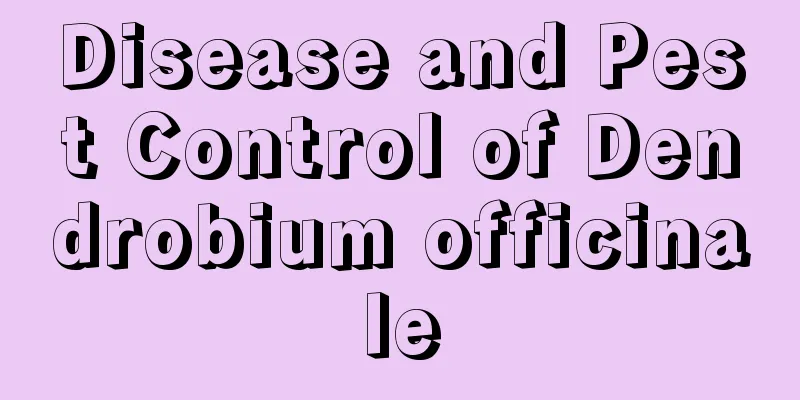Disease and Pest Control of Dendrobium officinale

1. Black spot diseaseWhen black spot disease first occurs, there will be dark brown spots on the leaves with yellow surroundings, and then they will slowly spread to the entire leaf, and finally the leaves will wither and fall off. March to May every year is the peak period of this disease. You can spray Bordeaux mixture or Multi-Spirit liquid to prevent the disease and control its development. 2. SnailSnails like to eat the leaves and stems of Dendrobium nigrofuranum, which is particularly harmful. They often eat the entire plant into a mess. Usually, you should pay attention to cleaning up dead branches and leaves to keep the place clean and hygienic. You can mix dichlorvos with bran and place it in places where snails often appear to poison and kill them. You can also directly spray dichlorvos and other pesticides or quicklime and salt water on the planting site. 3. AnthraxWind and rain can spread anthrax, and it usually invades through the wounds of Dendrobium nigrofusum, so the disease usually occurs when there is a lot of rain. In the early stage of the disease, small black round spots will grow on the stems and leaves of Dendrobium officinale. Gradually, pink sticky substances will appear on the small black spots, and finally the leaves will wither and fall off. Clean up fallen leaves and dead branches in time every winter to prevent pathogens from storing over the winter, and spray carbendazim or methyl thiophanate. 4. Soil pollutionMarch to May every year is also the outbreak period of sooty mold disease. As the name suggests, when this disease and pest occurs, all leaf surfaces will be covered with a layer of black powder like soot, affecting the photosynthesis of the leaves. Prevention and control measures: dilute carbendazim or malathion emulsion and spray. 5. Philippine shield scaleThe Philippine shield scale is a common parasite. It often hides on the back or edge of the leaves of Dendrobium black hair and sucks leaf juice, causing the leaves of Dendrobium black hair to wither and fall off. If it is not controlled well, it will cause the Dendrobium black hair to wither and die, and it will also cause sooty mold disease. When the Philippine shield scale grows into shells but there are not many of them, you can cut off the branches and leaves that have been infected by the disease and insects and burn them together or simply pinch them to death. Late May is the hatching period of this insect. When the number of pests is large, you can spray dimethoate emulsifiable concentrate or lime sulfur mixture. |
>>: Disease and Pest Control of Lespedeza
Recommend
The efficacy and effects of sagebrush
1. Efficacy 1. Medicinal effects Dragon bone gras...
Tomato planting technology
1. Planting environment 1. Temperature: Tomatoes ...
How to make Tillandsia bloom on New Year's Day
Actual flowering period Under normal circumstance...
What to do if Christmas cactus doesn't bloom
1. Reduce nitrogen fertilizer 1. Reason: Although...
Now you can just scatter some seeds and you don’t have to buy vegetables for half a year!
Peas 1. Select healthy and plump peas and soak th...
How to grow Haworthia succulenta
1. Fertilization In this regard, flower lovers ha...
A complete guide to the propagation of Iris
Seed propagation of Iris Iris can be propagated b...
Is the goldfish plant a shade or sun-loving plant?
Does the goldfish flower prefer shade or sun? Gol...
Why Orchids Don't Bloom
1. Unsuitable environment 1. Reason: Orchids are ...
The easiest way to grow celery
Celery is a common seasoning vegetable and is gro...
Honeydew melon planting time and method planting technology and cultivation methods
Honeydew melon planting time Hami melons are gene...
When to sow lotus seeds
Lotus seed sowing time Lotus seeds are the seeds ...
Peacock arrowroot leaf spot disease prevention and control methods
Leaf spot damage of peacock plant Peacock plant i...
How big is the profit margin of fertilizer (how much profit is there in selling a bag of fertilizer)
What is the profit margin of the fertilizer indus...
What causes meat to become soft?
1. Frostbite 1. Reason: Most succulents prefer wa...









